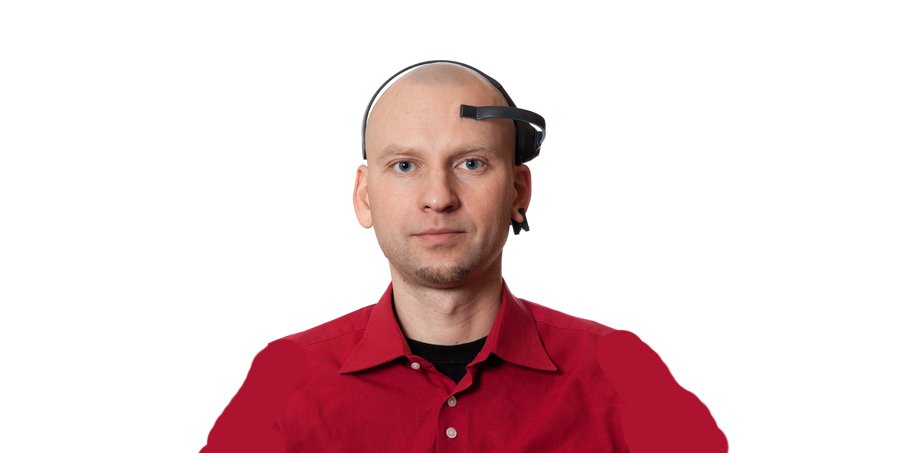You’ve read here before about studies showing that meditation bolsters physical and mental health. Even physicians are getting the idea these days; maybe yours told you to go home and chant to lower your blood pressure. But what if you’re too wired to meditate? What if you can’t clear your mind for more than two seconds before you start planning dinner or obsessing about what you should have said to your boss?
A potpourri of home biofeedback products now on the market may offer what you need. What is biofeedback? Dr. Andrew Weil explains, “Biofeedback is a mind-body technique that helps teach patients how to influence their autonomic nervous systems — the part of the body that controls involuntary physical functions such as blood pressure, heart rate, muscle tension, and brainwave frequency. The technique uses electronic equipment that gives users feedback about their internal states and helps them discover how to control these states.”1 “Balanced Living.” Weil. 12 June 2015. http://www.drweil.com/drw/u/ART00466/Biofeedback-Dr-Weil-Wellness-Therapies.html
The benefits of biofeedback are impressive. The technique can help with substance abuse problems, epilepsy, ulcers, chemotherapy side effects, anxiety, depression, sleep disorders, migraines, hypertension, stress-related conditions, hot flashes, incontinence, and more. While working with a biofeedback professional may be needed for medical applications, home machines have been shown to be quite effective in delivering simple stress relief.
Virtually all the products now on the market for home use come equipped with sensors that read your pulse and your heart rate variability, which are measures of stress. You wear the sensors on your fingers or ears while hooked up, typically watching a display on your computer or mobile device that shows you how you’re doing. The trick is to learn to reduce the stress by monitoring your own reading. Some devices do this by allowing you to see graphs of your readings; others let you play games that require you to lower your pulse rate and control your breath in order to make progress in the game.
The medical community seems to favor a line of products from a company called HeartMath, probably because the HeartMath people have done lots of research to support the efficacy of their offerings. According to their website2 http://www.heartmath.org/ , “Since 1991, the HeartMath Institute has researched and developed reliable, scientifically validated tools and technologies that help people improve their emotional balance, health and performance.”
HeartMath offers three products. First, there’s the Inner Balance Sensor for Apple ($129). It works with IPhones, IPads, and the IPod Touch. You plug a sensor into your mobile device and wear a headphone that records your heart variability rate. On screen, the visual shows you this rate as a wave pattern. You also see a representation for your pulse rate and your “power spectrum,” which graphs what’s happening in your autonomic nervous system. Meanwhile, instructions roll across the screen (e.g., “Focus on your heart”) guiding you to move toward “coherence,” or a calmer state.
There’s a desktop version of HeartMath for multiple users called the EmWave Pro ($299). The Pro has more features, but it’s the same basic idea. Likewise, the EmWave 2 ($199), is a portable device that works for those without an IPad. It has a few games thrown in as well.
The HeartMath website claims significant success in helping people to relax. One study of 5500 individuals, according to the home page, found “improvements in mental & emotional well-being…in just 6-9 weeks using HeartMath training and technology.” According to the data, HeartMath led these users to a 50% drop in fatigue, a 46% drop in anxiety, a 60% drop in depression, a 24% improvement in the ability to focus, and a 30% improvement in sleep. It’s probably worth noting that the study was designed and administered by the company, meaning it’s possible that the reported results represent an exaggeration, but on the other hand, there’s plenty of other research showing that biofeedback in general works.
Incidentally, the HeartMath company maintains a sister institute that conducts research and education on Mind-Body connections and tools. The Institute provides a library of stress reduction webinars, recordings, and books to its members for a minimum contribution of $10 a month.3 http://www.heartmath.org/
For those who want a less clinical and perhaps more comprehensive approach to home biofeedback, the Wild Divine products offer an alternative.4 http://www.wilddivine.com/
Wild Divine started by offering a series of graphically stunning video games that users navigate by relaxing while hooked up to finger or ear sensors. The sensors measure both heart rate variability and skin conductance level (SCL). As the website explains “Increased SCL indicates increased autonomic nervous system activation, which is associated with increased energy-both positive, like excitement, and negative, like fear.”
The Wild Divine games take users on a video journey through an onscreen world fraught with obstacles. The only way to proceed through the world is to relax. Relaxing makes doors open, rivers part, balloons land without breaking. It’s a fun but challenging way to learn how to control breath and pulse. You can buy one of the Wild Divine games for about $150, including the biofeedback sensor.
The company has now widened its offerings, providing a unique way for users to get individual feedback about their “performance” as they attempt to meditate. As Dr. Bob Whitehouse of the Association of Applied Psychophysiology and Biofeedback explains, “Usually [biofeedback] involves a coach/guide, interpreting the results, and making suggestions. In the Wild Divine programs however, the guide/coach is included in the programs & games, with personalized information about your progress.”
The guide Dr. Whitehouse refers to isn’t simply a graph or chart with numbers; rather, in one program a video representation of a living Zen Master gives individual verbal feedback. If your mind wanders and you’re restless, the Master might tell you take a walk and come back later. If your mind stays clear and your heart rate slows to a significant degree, you might be told that you’re doing very well, making good progress. There are at least half a dozen different messages the Master might deliver, depending on your level of “coherence.” Keep in mind that you’re physically connected to the software through the device so these messages are specific to what’s going on in your mind and body at any given moment. We’re not talking Magic Eight Ball messages.
For an even more immersive experience, you can subscribe to Wild Divine Online, a world that offers relaxation games, Zen meditation, a virtual ashram where you can meditate with Deepak Chopra, a “spa” where you can get basic training in relaxation methods, a grapher that lets you see your pulse and other vital signs, and virtual group meditations where other users come together at the same time for guided sessions.5 http://www.wilddivineonline.com/ You can see who else is meditating when you are because each user has a unique “avatar” assigned and these avatars appear onscreen.
There are plenty of other biofeedback devices on the market. If you’re motivated to give it a try, simply Google “home biofeedback devices” and see what’s out there. Remember, Jon Barron devoted an entire chapter of his book, Lessons from the Miracle Doctors, to how your mind affects your health–even to the point of whether you live or die. If you’re not motivated yet, you might want to read that chapter, It’s the Thought that Kills. It just might give you the motivation you need.
References












I keep telling you. This type
I keep telling you. This type of meditation, and some of the biofeedback programs you describe, are SPIRITUAL, NOT MEDICAL. They carry heavy spiritual consequences. They are not compatible with the Christian and Jewish faiths. Your promotion of them as medical is basically fraudulent. You need to tell people these are SPIRITUAL techniques that may or may not be compatible with their faith. You owe it to them to be truthful. The fact you fail to do this makes me question how reliable your other information is. This is important. Don’t ignore it!
Perhaps you are unaware that
Perhaps you are unaware that there are over 9,000 studies on the medical applications of biofeedback. http://www.ncbi.nlm.nih.gov/pubmed/?term=biofeedback+therapy. And mindfulness meditation has almost 3,000 studies supporting its medical benefits. http://www.ncbi.nlm.nih.gov/pubmed/?term=meditation+therapy.
What utter rubbish you speak.
What utter rubbish you speak.
These techniques are not to be avoided because of ‘religious reasons’- any faith that would stop people from following a harmless practice which produces healthy benefits and helps them feel better is not a faith that has a place in a civilised world.
Faith should seek to help people when they suffer not try to stop people using a tool to help their health.
Is it because meditation is practised by buddhists and other faiths that you feel the need to shun it in favour of your interpretation of Abrahamic faiths?
It’s just brain waves and states, which i hate to tell you ARE scientifically observable and are of use medically- people are subject to those throughout their lives, are you suggesting they shouldn’t use the brains that a god may have given them? That they should stay suffering because someone CHOOSES to dictate that their faith doesn’t allow them to use a tool which may help them feel better and lead a better life?
Remind me again of the scripture that says ‘you should not meditate’?
Hopefully someone who needs help and may benefit from meditation and biofeedback is not put off by your beliefs.
What ‘spiritual consequences’ do you believe there could possibly be for going into a relaxed state that a lot of people go into every day?
If this brought Christians and Jews closer to god and enhanced their faith surely that would be a good thing?
Guess you never heard of
Guess you never heard of Christian contemplative prayer? Even Jesus did this.
Just what I need right now,
Just what I need right now, thanks.